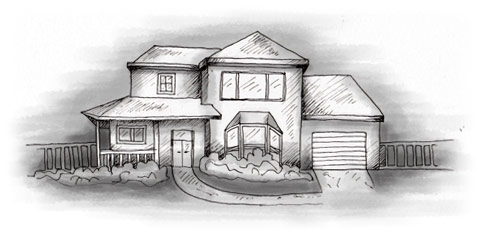However, as the recession hit Italy in the late 1980s and early 1990s, prices fell as buyers disappeared, although Italy didn’t experience the dramatic falls that many other European countries and North America did. During the recession most Italians simply refused to accept the lower market prices and only sold if they were forced to do so. Prices were also maintained by the cautious lending policies of Italian banks, which led to fewer repossessions than in some other countries.
In 1998, however, a decade of property recession ended, helped by the weakness of the lira against the British pound and US dollar and the entry of foreign lenders into the mortgage market, which made home loans easier to obtain. Since 2002 the poor performance of stock markets world-wide has led to a marked increase in investment in Italian property (as in many other countries) and the property market is currently booming.
In the five-year period between 1998 and 2002 prices rose on average by some 40 per cent country-wide (an average of around 7 per cent per year) and prices are currently increasing much ahead of inflation (the average increase in the first six months of 2003 was 5.2 per cent compared with inflation of between 2 and 3 per cent). Property prices in major cities tend to increase more slowly (3.1 per cent in the first half of 2003). In rural areas, where there’s no strong local demand, prices are unlikely to rise or fall dramatically.
Rural Areas
As in most countries, property is at its cheapest in rural areas, where the exodus in the last 30 years has left the countryside with a surfeit of empty properties and, with the exception of properties within commuting distance of Rome and other major cities, the further south you go the cheaper rural property becomes. Except in the most popular areas (see Tuscany below), rural property generally costs between €450 and €2,000 per m2.
Although you can spend several million euros on a luxurious palazzo or a large country estate, it’s possible to buy a renovated village house or a one or two-bedroom apartment in a small town for as little as €60,000. In many areas, old village houses in need of complete restoration can be purchased for €40,000, although you should expect to pay two or even three times the purchase price in restoration costs. In many rural areas, €65,000 to €150,000 will buy a restored two-bedroom farmhouse with a bit of land. However, you can easily pay over €350,000 for a small farmhouse in a fashionable area of Tuscany or an apartment with a view on the Italian Riviera.
Among the most popular rural areas are the Italian lakes (where little property is available except for apartments), which is reflected in the above average prices, e.g. from €125,000 for a new or restored one-bedroom apartment on Lake Como or Maggiore, and from €150,000 for a two-bedroom apartment. If you dream of living in Venice, note that a studio on the Grand Canal will set you back around €300,000 – if you can find one! –and palazzo apartments go for millions. Homes on the Italian Riviera are also highly prized and expensive, but a good investment. Here a studio apartment will cost you €100,000 and a two-bedroom, sea-front apartment €300,000 or more. A short distance inland, however, traditional unrestored village houses can be bought for as little as €40,000.
Properties in ski resorts and on most islands are also expensive due to the shortage of building land and high demand but are a good investment and have excellent rental potential. In a top ski resort, such as Cortina, you will pay from €100,000 for a studio, from €175,000 for a one-bedroom apartment and from €250,000 for a two-bedroom apartment. Two or three-bedroom villas cost up to €1 million. For those with smaller bank balances, holiday apartments in many coastal resorts and Sicily start at around €100,000.
Tuscany
Tuscany is by far the most popular (and expensive) region for country homes among foreigners, particularly the so-called ‘golden triangle’ bounded by Florence, Sienna and Volterra, which is claimed to have the world’s most expensive rural property. So many Britons have purchased homes in Tuscany that the Chianti region has been dubbed ‘Chiantishire’ by expatriate Brits (‘a corner of Italy that’s forever England’). Much of Tuscany is absurdly expensive, but in areas such as Lunigiana, Mugello, north of Lucca and around Arezzo, prices are around half those in the more expensive areas.
Nevertheless, if you’re looking for a country property in an attractive area, you will find that in the Marche and Umbria prices are around 30 to 50 per cent lower than the most expensive areas of Tuscany and properties come with up to ten times the amount of land (although they’re in equally short supply).
Cities
Prices in the major cities vary considerably with the suburb or zone, and properties may be sub-divided into signorile (refined or luxury), medio (average) and economico (economy). Italy’s most expensive property is found in Milan and Rome (where from 1998 to 2002 prices rose by 43 per cent and 50 per cent respectively) and, of course, Venice. Here a three-bedroom apartment can easily cost over €400,000. Prime properties can cost up to €8,000 per m2 (al m2 or al metro quadrato) in central Milan, Rome and Venice, and €1,500 to €5,000 in other major cities and resort areas. However, property in most cities is typically from €700 per m2 for old unrenovated properties and up to €4,000 per m2 for new or renovated properties. In cities and towns, garages and external parking places are usually sold separately and may cost around €25,000 and €12,000 respectively.
This article is an extract from Buying a Home in Italy from Survival Books.

